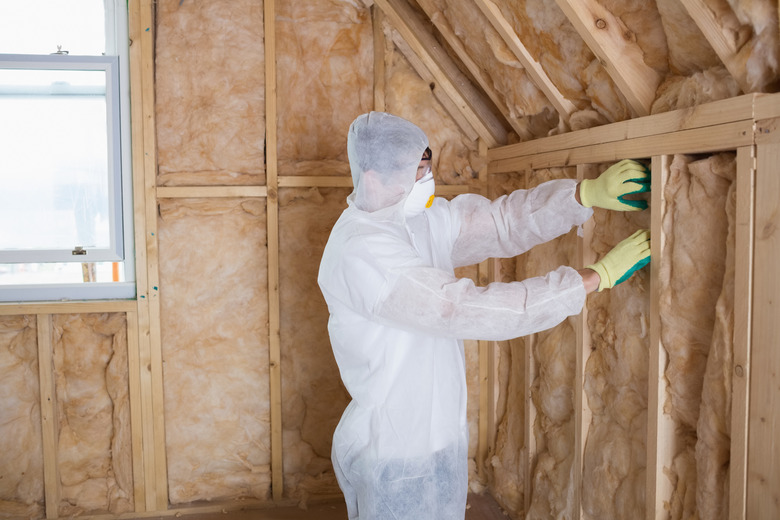What Are The Dangers Of Fiberglass Insulation?
We may receive a commission on purchases made from links.
Out of sight, out of mind? That rule doesn't apply to your home insulation. You can't afford to ignore any possible health and safety risks that might be hiding in your walls and attic. After all, some old homes are still insulated with materials that contain dangerous asbestos. But what about fiberglass insulation?
It's been used in American homes for a century and actually rose to prominence as a safer alternative to asbestos insulation. Safer doesn't mean completely risk-free, though. Whether you're moving into a new place that has existing fiberglass insulation or you're planning to pull out and replace your existing insulation, here's what you need to know about the dangers of using and handling fiberglass in your home.
Short-Term Exposure Risk of Fiberglass Insulation
Short-Term Exposure Risk of Fiberglass Insulation
Anyone who has ever handled fiberglass insulation is well aware of the immediate risks. It's pretty unpleasant to touch. Fiberglass is literally made from tiny glass fibers. (Sustainability alert: Most fiberglass products are made with somewhere between 40 and 60 percent recycled glass content.)
As you can probably imagine, it can be really painful to handle material that's composed of minuscule glass shards. Even quickly brushing your hand across fiberglass insulation can leave those glass shards embedded in your skin, causing immediate irritation and a rash. Glass fibers are also thrown into the air when the insulation is moved, which can cause irritation to your eyes, nose, and throat. You may experience some nausea or other stomach discomfort if you accidentally ingest any glass fibers. While these risks may not have long-term health effects, they can be very unpleasant in the hours and days after you handle fiberglass insulation.
Long-Term Exposure Risk of Fiberglass Insulation
Long-Term Exposure Risk of Fiberglass Insulation
If you handle fiberglass insulation once in your home, it's extremely unlikely you'll suffer any serious health effects. Any possible long-term dangers of fiberglass are really relevant for people who work with the stuff frequently and may inhale the fibers over and over again.
That said, the long-term dangers of fiberglass insulation are hard to quantify. It's just not something that researchers have spent a lot of time studying in recent years. Fiberglass was once considered a possible cancer risk, and fiberglass products were labeled as such. But in 2011, the National Toxicology Program removed biosoluble glass wool fibers — the type of fibers used in insulation — from its "Reasonably Anticipated To Be Carcinogens" list. Also, per OSHA, there's insufficient evidence that fiberglass causes respiratory disease in humans.
Alternatives to Fiberglass Insulation
Alternatives to Fiberglass Insulation
If you're choosing new insulation for your home and have any concerns about using fiberglass, there are other options to consider. For example, Styrofoam insulation is a popular alternative to fiberglass. It's highly moisture-resistant, so it's great for humid areas, and because it comes in rigid foam boards, it can be easier to install than fiberglass in certain situations. Cellulose and mineral wood/rock wood are other common insulation types.
Don't worry if you don't know what type of insulation is best suited for your needs or how much insulation you need. A number of factors, including your geographical area, will come into play. Hiring insulation contractors to handle everything is a good solution for the typical homeowner.
Precautions While Handling Insulation
Precautions While Handling Insulation
If you ever need to remove fiberglass insulation or handle it for any reason, protecting yourself is pretty simple. Covering your skin and face should reduce the risk that you'll come in contact with any irritating glass fibers. Wear long sleeves, long pants, protective gloves, a mask, and safety goggles to minimize your risk. Work in a well-ventilated space.
Wash your skin right away if you make any direct contact with fiberglass. You may also use adhesive tape to pull glass fibers off your skin. Also, change your clothing as soon as you're finished handling fiberglass. Wash those items separately from the rest of your laundry and rinse out the washing machine after cleaning them to flush out any glass fibers that may have been transferred to the machine.
